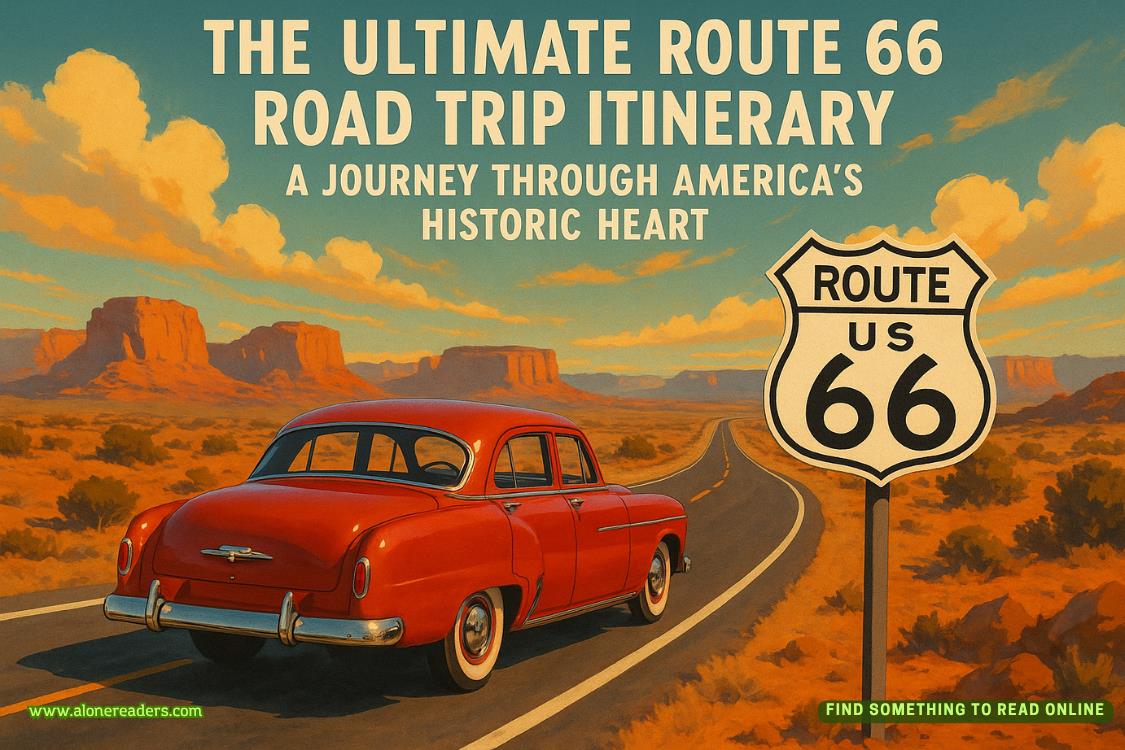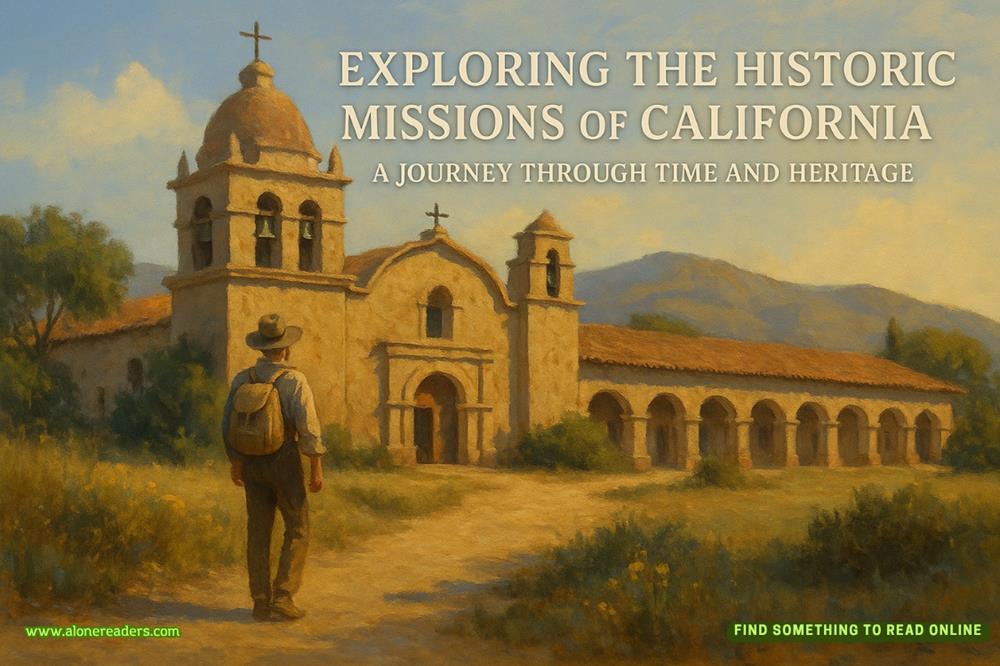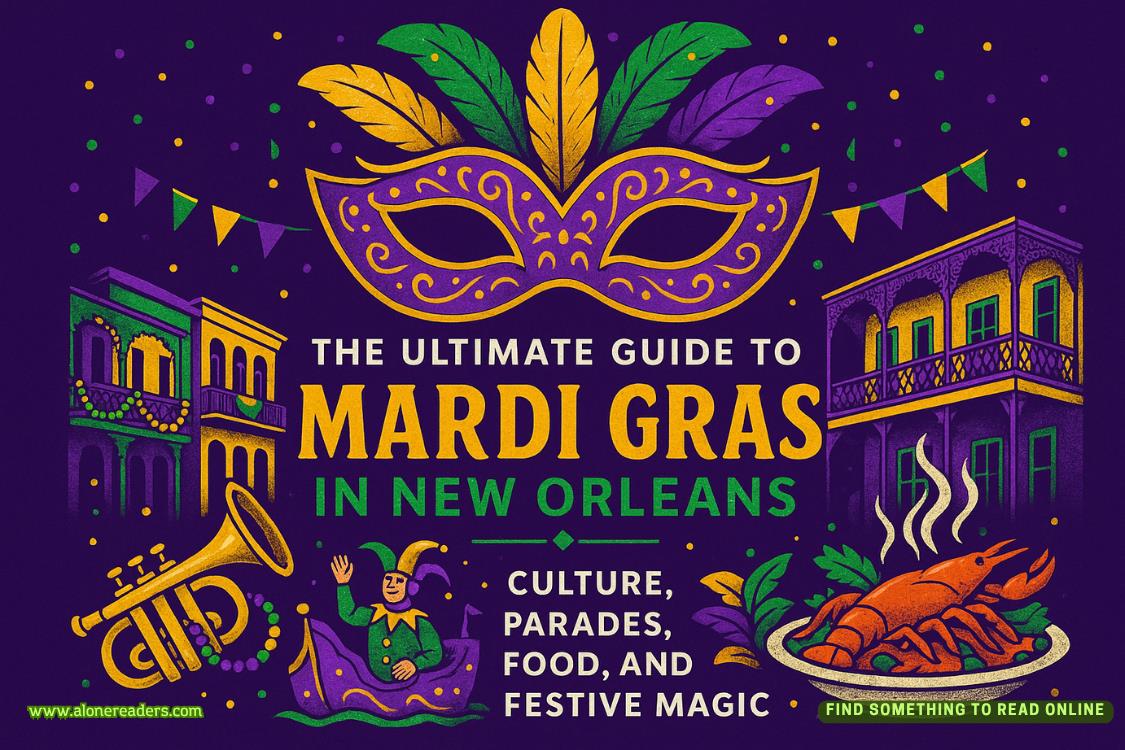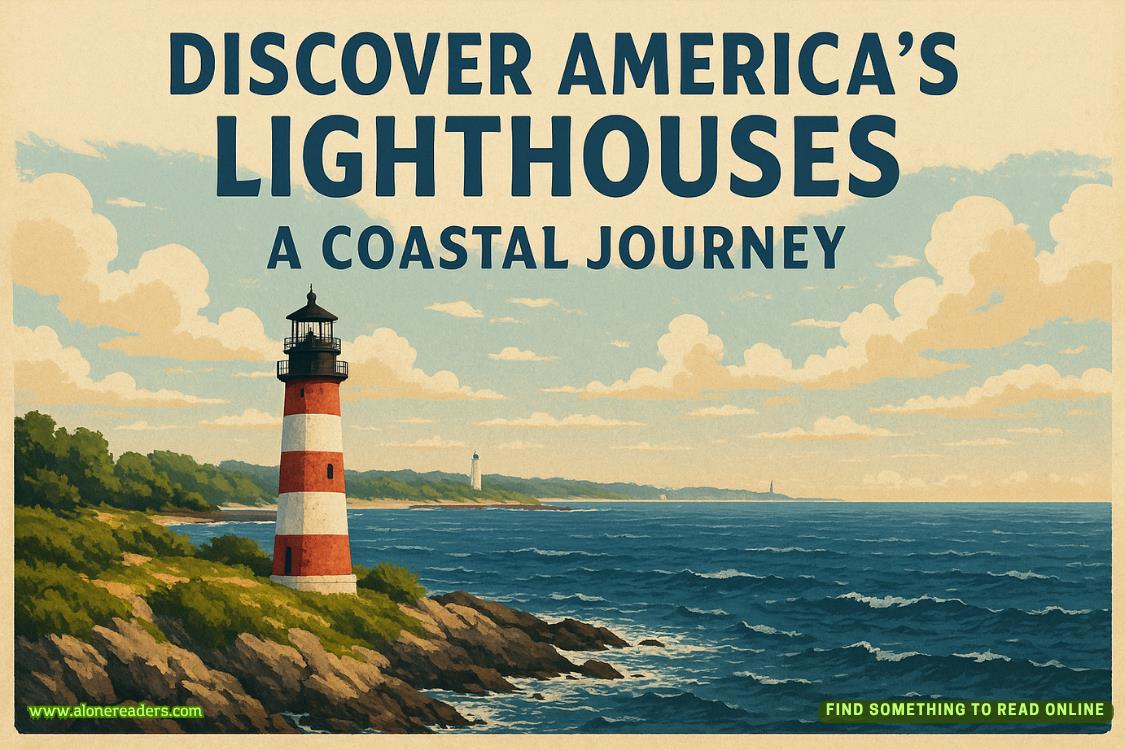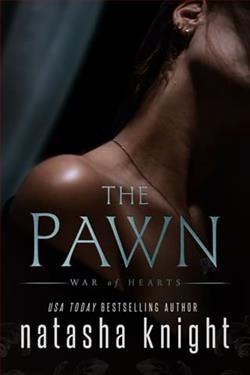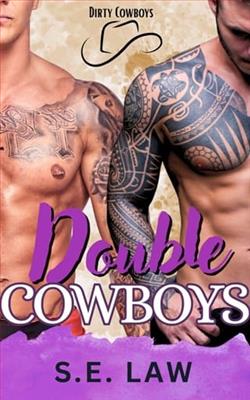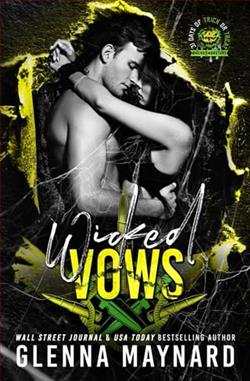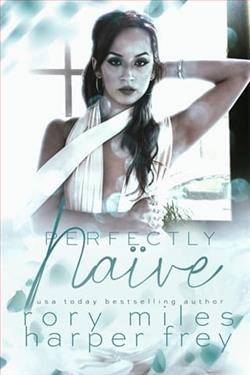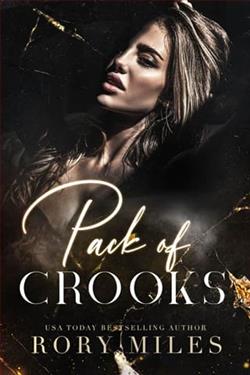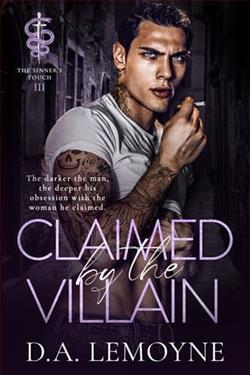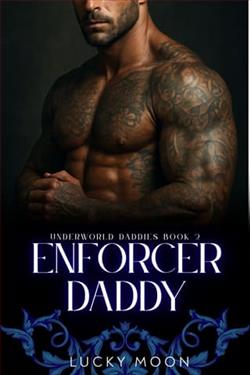Page 21 of The Longest Ride
Her expression was animated over dinner as she explained that Black Mountain College was a liberal arts school founded in 1933, whose faculty included some of the most prominent names in the modern art movement. Every summer, there were art workshops - conducted by visiting artists whose names I did not recognize - and as she rattled off the names of the faculty, Ruth grew more and more excited at the thought of visiting the college while we were in the area.
How could I say no?
The following morning, under a brilliant blue sky, we drove to Black Mountain and followed the signs to the college. As fate would have it - and I have always believed it to be fate, for Ruth always swore she knew nothing about it beforehand - an artists' exhibition was being held in the main building, spilling out onto the lawn beyond. Though it was open to the public, the crowds were relatively sparse, and as soon as we pushed through the doors, Ruth simply stopped in wonder. Her hand tightened around my own, her eyes devouring the scene around her. I watched her reaction with curiosity, trying to understand what it was that had so captivated her. To my eyes, those of someone who knew nothing about art, there seemed to be little difference in the work displayed here from that at any of the countless other galleries we'd visited over the years.
"But there was a difference," Ruth exclaims, and I get the sense that she still wonders how I could have been so dense. In the car, she is wearing the same collared dress she wore on the day we first visited Black Mountain. Her voice rings with the same sense of wonder I'd witnessed back then. "The work... it was like nothing I had ever seen before. It was not like the surrealists. Or even Picasso. It was... new. Revolutionary. A giant leap of imagination, of vision. And to think that it was all there, at a small college in the middle of nowhere! It was like finding..."
She trails off, unable to find the word. Watching her struggle, I finish for her.
"A treasure chest?"
Her head snaps up. "Yes," she immediately says. "It was like discovering a treasure chest in the unlikeliest of places. But you did not understand that yet."
"At the time, most of the artwork I saw struck me as a collection of random colors and squiggly lines."
"It was Abstract Expressionism."
"Same thing," I tease, but Ruth is lost in the memory of that day.
"We must have spent three hours there, wandering from one work to the next."
"It was more like five hours."
"And yet you wanted to leave," she says reproachfully.
"I was hungry," I reply. "We didn't have lunch."
"How could you even think of food when we were seeing such things?" she asks. "When we had the chance to talk to such amazing artists?"
"I couldn't understand a thing you said to them. You and the artists were speaking a foreign language. You would talk about intensity and self-denial, while throwing around words like Futurism, Bauhaus, and synthetic Cubism. To a man who sold suits for a living, these words were gibberish."
"Even after my father explained it to you?" Ruth seems exasperated.
"Your father tried to explain it to me. There's a difference."
She smiles. "Then why did you not force me to leave? Why did you not take my arm and steer me to the car?"
This is a question she has wondered about before, whose answer she has never fully understood.
"Because," I reply as always, "I knew that staying was important to you."
Unsatisfied, she nonetheless presses on. "Do you recall who we met that first day?" she asks.
"Elaine," I say automatically. I may not have understood art, but people and faces were within my grasp. "And, of course, we met her husband, too, though we didn't know then that he would later teach at the college. And then later in the afternoon, we met Ken and Ray and Robert. They were students - or, in Robert's case, later would be - but you spent a lot of time with them as well."
By her expression, I know she's pleased. "They taught me many things that day. I was much better able to understand their primary influences after speaking with them, and it helped me to understand much more about where art would be headed in the future."
"But you liked them as people, too."
"Of course. They were fascinating. And each of them was a genius in his own right."
"Which is why we continued to go back, day after day, until the exhibition closed."
"I could not let this remarkable opportunity pass. I felt lucky to be in their presence."
In hindsight, I see that she was right, but at the time all that mattered to me was that her honeymoon be as memorable and fulfilling as I could make it.
"You were very popular with them as well," I point out. "Elaine and her husband enjoyed having dinner with us. And on the final night of the show, we were invited to that private cocktail party at the lake."
Ruth, replaying these treasured memories, says nothing for a moment. Her gaze is earnest when she finally meets my eyes.
"It was the best week of my life," she says.
"Because of the artists?"
"No," she answers with a tiny shake of her head. "Because of you."
On the fifth and final day of the exhibition, Ruth and I spent little time together. Not because of any tension between us, but because Ruth was eager to meet even more faculty members, while I was content to wander among the works and chat with the artists we'd already had the chance to get to know.
And then it was over. With the exhibition closed, we devoted the next few days to activities more typical of newlyweds. In the mornings we walked the nature trails, and in the afternoons we read by the pool and went swimming. We ate in different restaurants every evening, and on our last day, after I made a phone call and loaded our suitcases in the trunk, Ruth and I got into the car, both of us feeling more relaxed than we had in years.
Our return trip would bring us past Black Mountain one last time, and as we approached the turnoff on the highway, I glanced over at Ruth. I could sense her desire to return. Deliberately, I took the exit, heading toward the college. Ruth looked at me, her eyebrows raised, obviously wondering what I was doing.
"Just a quick stop," I said. "I want to show you something."
I wound through the town and again made a turn she recognized. And just as she'd done back then, Ruth begins to smile.
"You were bringing me back to the lake by the main building," she says. "Where we attended the cocktail party on the last night of the exhibition. Lake Eden."
"The view was so pretty. I wanted to see it again."
"Yes." She nods. "That is what you said to me back then, and I believed you. But you were not telling the truth."
"You didn't like the view?" I ask innocently.
"We were not going there for the view," she says. "We were going there because of what you had done for me."
At this, it is my turn to smile.
When we arrived at the college, I instructed Ruth to close her eyes. Reluctantly she agreed, and I took her gently by the arm and walked her down the gravel path that led to the lookout. The morning was cloudy and cool, and the view had been better at the cocktail party, but it really didn't matter. Once I settled Ruth in exactly the right spot, I told her to open her eyes.
There, on easels, were six paintings, by those artists whose work Ruth had admired most. They were also the artists with whom she'd spent the most time - work by Ken, Ray, Elaine, Robert, and two by Elaine's husband.
"For a moment," Ruth says to me, "I did not understand. I did not know why you had set them up for me."
"Because," I said, "I wanted you to see the work in the natural light of day."
"You mean the art that you had bought."
That was, of course, what I had been doing while Ruth met with the faculty; the phone call that morning had been to make sure the paintings would be set up by the lake.
"Yes," I say. "The art that I bought."
"You know what you did, yes?"
I choose my words carefully. "I made you happy?" I ask.
"Yes," she
says. "But you know what I am talking about."
"That wasn't why I bought the paintings. I bought them because you were passionate about them."
"And yet...," she says, trying to make me say it.
"And yet, it didn't cost me all that much," I say firmly. "They weren't who they later became, back then. They were simply young artists."
She leans toward me, daring me to continue. "And..."
I relent with a sigh, knowing what she wants to hear.
"I bought them," I say, "because I'm selfish."
I'm not lying about this. Though I bought them for Ruth because I loved her, though I bought them because she'd loved the paintings, I also bought them for me.
Quite simply, the exhibition changed Ruth that week. I had been to countless galleries with Ruth, but during our time at Black Mountain College something inside her was awakened. In a strange way, it magnified a sensual aspect of her personality, amplifying her natural charisma. As she studied a canvas, her gaze would sharpen and her skin would flush, her whole body reflecting a pose of such intense focus and engagement that others couldn't fail to notice her. For her part, she was completely unaware of how transformed she appeared in those moments. It was why, I became convinced, the artists responded so strongly to her. Like me, they were simply drawn to her, and it was also the reason they had been willing to part with the work I purchased.
This electric, intensely sensual aura would linger long after we left the exhibition and returned to the hotel. Over dinner, her gaze seemed to glitter with heightened awareness, and there was a marked grace to her movements that I hadn't seen before. I could barely wait to get her back to the room, where she proved especially adventurous and passionate. All I remember thinking is that whatever it was that had stimulated her this way, I wanted it never to end.
In other words, as I'd just told her, I was selfish.
"You are not selfish," she says to me. "You are the least selfish man I have ever known."
To my eyes, she looks as stunning as she did on that last morning of the honeymoon, as we stood near the lake. "It's a good thing I've never allowed you to meet another man or you might think differently."
She laughs. "Yes, you can make a joke. You always liked to play the joker. But I tell you, it was not the art that changed me."
"You don't know that. You couldn't see yourself."
She laughs again before growing quiet. Suddenly serious, she wills me to pay attention to her words. "This is what I think. Yes, I loved the artwork. But more than the work, I loved that you were willing to spend so much time doing what I loved. Can you understand why that meant so much to me? To know that I had married a man who would do such things? You think it is nothing, but I will tell you this: There are not many men who would spend five or six hours a day on their honeymoon talking to strangers and looking at art, especially if they knew almost nothing about it."
"And your point is?"
"I am trying to tell you that it was not the art. It was the way you looked at me while I looked at the art that changed me. It is you, in other words, who changed."
We have had this discussion many times over the years, and obviously we are of different opinions on the matter. I will not change her mind, nor will she change mine, but I suppose it makes no difference. Either way, the honeymoon set in motion a summer tradition that would remain with us for nearly all our lives. And in the end, after that fateful article appeared in the New Yorker, the collection would, in many ways, define us as a couple.
Those six paintings - which I casually rolled and stored in the backseat of the car for the ride back home - were the first of dozens, then hundreds, then more than a thousand paintings that we would eventually collect. Though everyone knows of Van Gogh and Rembrandt and Leonardo da Vinci, Ruth and I focused on twentieth-century American modern art, and many of the artists we met over the years created work that museums and other collectors later coveted. Artists like Andy Warhol and Jasper Johns and Jackson Pollock gradually became household names, but other, then less well-known artists, like Rauschenberg, de Kooning, and Rothko, also created work that would eventually sell at auctions at Sotheby's and Christie's for tens of millions of dollars, sometimes more. Woman III, by Willem de Kooning, sold for over $137 million in 2006, but countless others, including work by artists like Ken Noland and Ray Johnson, also had sales prices that reached into the millions.
Of course, not every modern artist became famous, and not every painting we bought became exceptionally valuable, but that was never a factor in our decisions about whether or not to buy a piece of art in the first place. These days, the painting I treasure most is worth nothing at all. It was painted by a former student of Ruth's and hangs above the fireplace, an amateur piece that is special only to me. The New Yorker journalist ignored it completely, and I didn't bother to tell her why I treasured it, because I knew she wouldn't understand. After all, she did not understand what I meant when I explained that the monetary value of the art meant nothing to me. Instead, all she seemed to want to know was how we'd been able to select the pieces we did, but even after I explained it, she didn't seem satisfied.
"Why did she not understand?" Ruth suddenly asks me.
"I don't know."
"You said to her what we had always said?"
"Yes."
"Then what was so difficult about it? I would talk about the ways in which the work affected me..."
"And I would simply observe you as you talked," I finished for her, "and know whether or not to buy it."
It wasn't scientific, but it worked for us, even if the journalist was frustrated by this explanation. And on the honeymoon it worked flawlessly, even if neither of us would fully understand the consequences for another fifty years.
It isn't every couple, after all, who purchases paintings by Ken Noland and Ray Johnson on their honeymoon. Or even a painting by Ruth's new friend Elaine, whose work now hangs in the world's greatest museums, including the Metropolitan Museum of Art. And, of course, it's almost impossible to conceive that Ruth and I were able to pick up not only a spectacular painting by Robert Rauschenberg, but two paintings by Elaine's husband, Willem de Kooning.
15
Luke
A
lthough he'd been preoccupied with thoughts of Sophia since the night they'd met, they didn't compare with the obsession he felt the following day. As he worked on some fencing in the far pasture, replacing posts that had begun to rot away, he occasionally found himself smiling as he thought about her. Even the rain, a cold autumn downpour that left him drenched, did little to dampen his mood. Later, when he had dinner with his mom, she didn't even attempt to hide a smirk that let him know she was fully aware of the effect that Sophia had on him.
After dinner, he called and they talked for an hour; the next three days followed the same pattern. On Thursday evening, he made the drive to Wake Forest, where they finally had a chance to walk around campus. She showed him Wait Chapel and Reynolds Hall, holding his hand as they strolled through Hearn and Manchester Plazas. It was quiet on campus, the classrooms long since emptied of students. Leaves had already begun to fall en masse, carpeting the ground beneath the trees. In the residence halls, lights were blazing and he heard faint strains of music as students began readying themselves for yet another weekend.
On Saturday, Sophia returned to the ranch. They went for a short ride on horseback, and afterward she followed him around as he worked, lending a hand whenever she could. Again they ate at his mother's place and then went back to his, the glowing fire as welcoming as it had been the week before. As had become usual, she headed back to the sorority once the fire began to burn lower - she wasn't yet ready to spend the night with him - but the following day, he drove with her to Pilot Mountain State Park. They spent the afternoon hiking up to Big Pinnacle, where they shared a picnic lunch and took in the view. They'd missed the pageant of autumn color by a week or so, but beneath the cloudless sky, the horizon stretched all the way to Virginia.
/>
In the week following Halloween, Sophia invited Luke back to the sorority. They were having a party on Saturday night. The novelty of his profession and their dating status must have worn off since he'd first shown up at the house, since no one paid him much attention after the initial hellos. He kept a wary lookout for Brian, but he was nowhere to be found. On their way out, he remarked upon it.
"He went to the football game at Clemson," Sophia told him. "Which made tonight an ideal night to visit."
